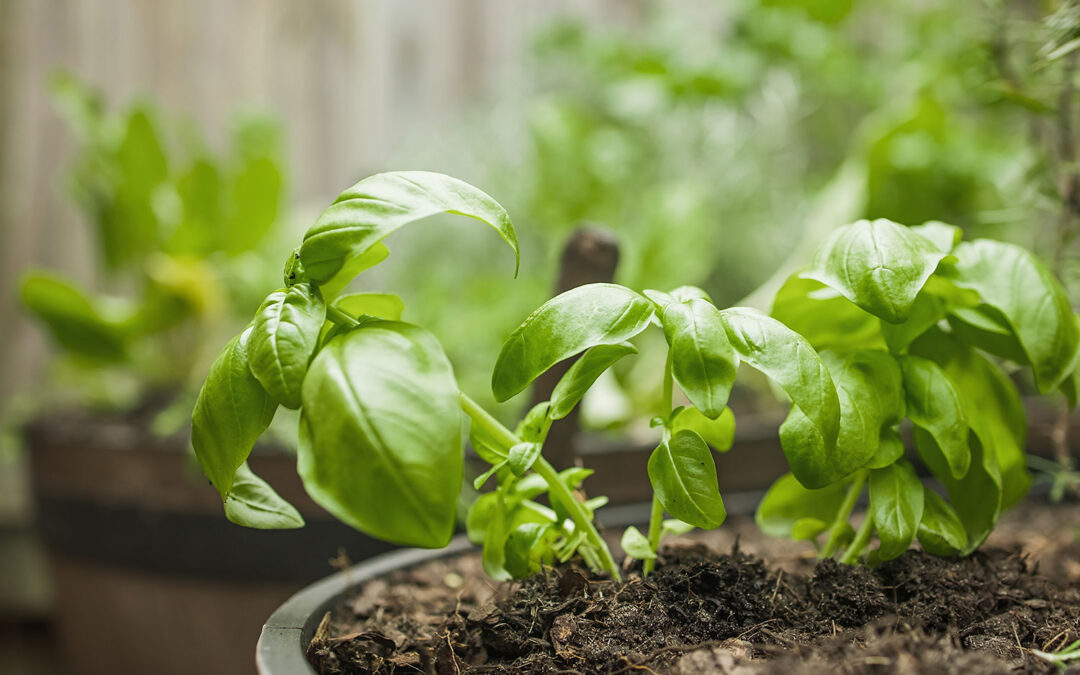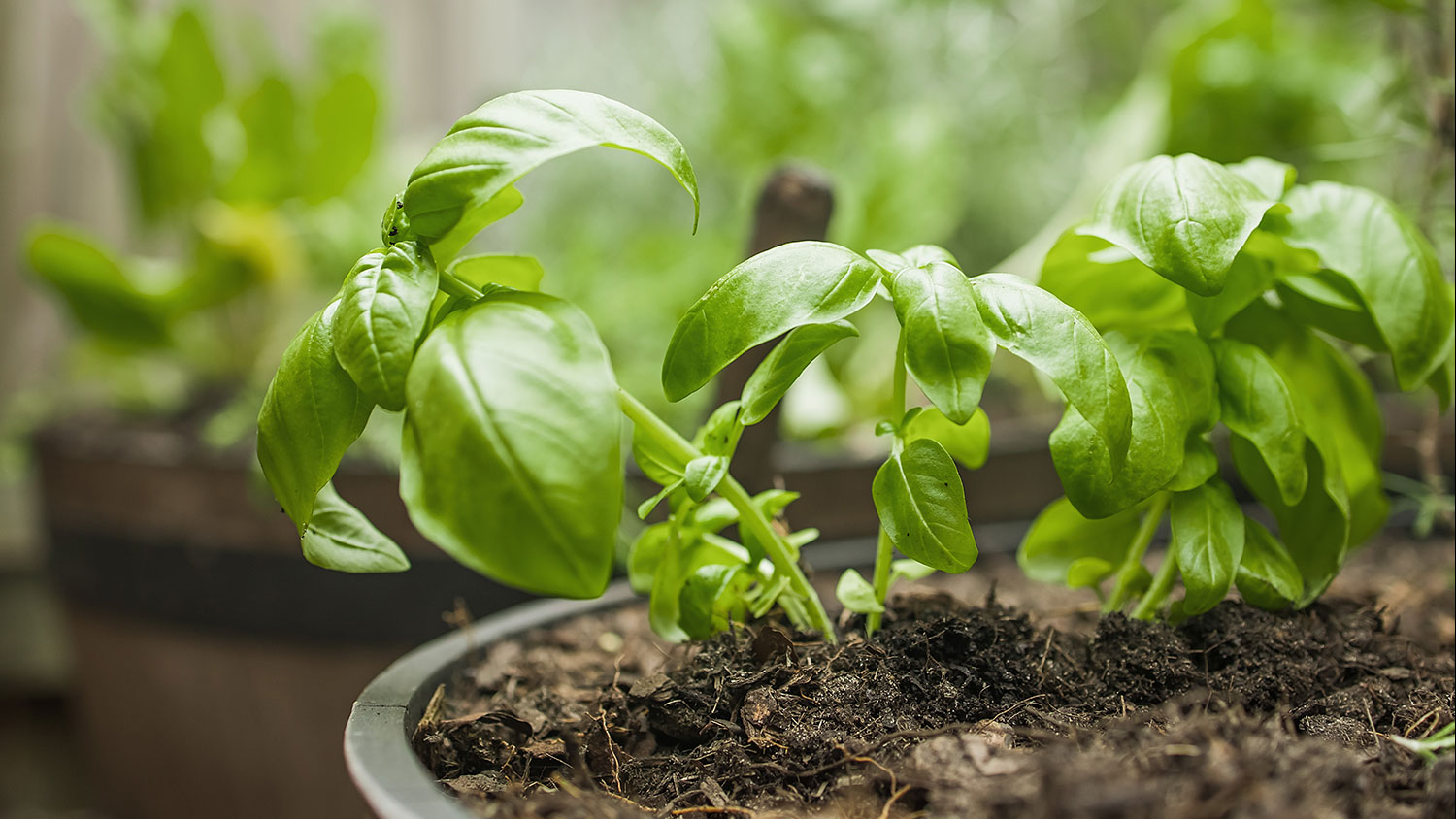We love our herbs, and at the height of summer, we are in prime herb-eating season… But your plant has the nerve to flower, produce seeds, and die! That’s disappointing, to say the least. How can you extend the life of your happy garden?
Annuals, Biennials, and Perennials: Oh My!
Who knew there were so many herb life expectancies? What do they all mean?
Annuals: They last for one full year, right? Wrong. The life expectancy is one season, which can range from 1-4 months.
Biennials: Never heard of these? Well, you probably aren’t alone. These herbs live for about two years.
Perennials: Ah, finally something familiar. These herbs last for more than two years, even indefinitely!
Examples of Annuals
- Basil
- Dill
- Cilantro
- Summer Savory
- Watercress
- Borage
- Calendula
- Chamomile
- Caraway
Don’t Just Listen to the Label
While an herb may be labeled “perennial” or “biennial,” there are no guarantees it will last that long. Why? Your climate. If you’re in a frosty-freezy part of the country, you will want to investigate what herbs are suitable for prolonged life in your hardiness zone. You may be surprised: herbs that grow as perennials in warmer climates may be annuals in your area. Don’t despair, though; you can extend their life too! (Keep reading.)
The Annual Herb’s Nemesis: Bolting
First off, what exactly is bolting? When your herb decides that it can’t deal with its harsh environment anymore, and goes on a suicide mission to pass on its genetic lineage by making seeds. (Seriously, here’s the science behind it!) Sad for us, many herbs lose their tasty flavor and texture during this process.
Preventing your annual from bolting will prolong its natural life (and preserve those alluring flavors)! How can you do it? Control your plant’s environment:
Temperatures
Warm temperatures encourage herbs to bolt and can even make a biennial plant seed and die within a few months. How can you remedy the situation? If you planted your herbs in containers, move them to a cooler location, possibly even indoors during the hottest part of the season. Did you opt for an in-ground garden? Mulch helps to keep your plant’s roots cool.
Sun
Many herb varieties require 6-8 hours of direct sun a day. Is yours receiving more? That may be what’s behind your herb’s decision to bolt! Move your plants to a shadier location, if possible. Shade cloth is also another excellent option for providing some mid-afternoon shade!
Pruning
Continue with your diligent pruning! Regularly pinching back new growth encourages your herb to produce a growth hormone instead of the hormone that causes bolting.
Watering
Do you regularly allow your herbs to go to the ‘brink of death’ before watering? Stress-related to a haphazard watering routine will leave your plant wondering if it can survive, triggering it to bolt. Research your specific herb’s water requirements and check the soil’s moisture level regularly.
Nutrients
Off-kilter nutrients will also cause your herb’s deadly growth spurt. Especially when it comes to annuals (1-4 month lifespan!), remember that many potting mixes have sufficient fertilizer for at least six months. Continuing to pile on the fertilizer will not benefit your plant. For in-ground gardens, a lack of nutrients is also dangerous. So, research your herb’s specific needs and come up with a plan!
Do Flowers Always = Bolting?
Not always. Some herbs are meant to flower! Chamomile, calendula, and borage are all flowering herbs. And while it’s not ideal, basil and chives can also bloom and still survive with their flavor intact.
Removing the Problem
If you wake up one morning to discover that your herb has suddenly bolted or flowered, what can you do? Cut the “bolt” off, all the way back to the top-most set of leaves. Make adjustments in your plant’s environment so that it hopefully won’t happen again. What about cilantro? Once it’s bolted, it’s gone. Get your little cilantro tombstone ready, and say goodbye.
Every Herb’s Challenge: Climate
Whether you’re trying to extend your herb’s life by shielding annuals from a sultry summer or protecting perennials from sub-zero temperatures, the climate is a challenge! Often, there’s only one solution: bring your herbs indoors. But, indoor living poses its own unique set of challenges.
For example, your herb’s light requirements don’t change. Finding an indoor location that receives 6-8 hours of direct sunlight can prove to be daunting (or impossible, if you haven’t been blessed with a sunroom). The solution? Grow lights, which you can learn more about here. The good news? With the right grow-light setup, your container garden can continue growing anywhere, even in the dingy basement. The bad news? If you want a full herb-growing operation, the proper grow lights will cost you a pretty penny!
Another challenge: watering needs, which are different indoors. Humidity levels and ventilation change drastically as soon as you enter your threshold, altering the amount of moisture your herbs need. You’ll need to monitor the moisture levels in the soil carefully, and lean on the drier side.
The verdict? Bringing a small pot or two of herbs indoors to over-summer or over-winter in the windowsill is simple enough. Anything more than that, and you could wind up with a headache. And annuals still have an unavoidable problem: Try as you might, eventually they will just die.
When to Call it Quits
In case you need to hear this: Replacing your plant does not mean you are a plant parent failure. No gardener likes to admit defeat, but you can only escape the inevitable for a few months at best. Despite your best efforts, your basil, dill, cilantro (or other annual herbs) is going to look raggedy and exhausted. That’s when it’s time to call it quits and head over to the herb shop for next year’s successor!


